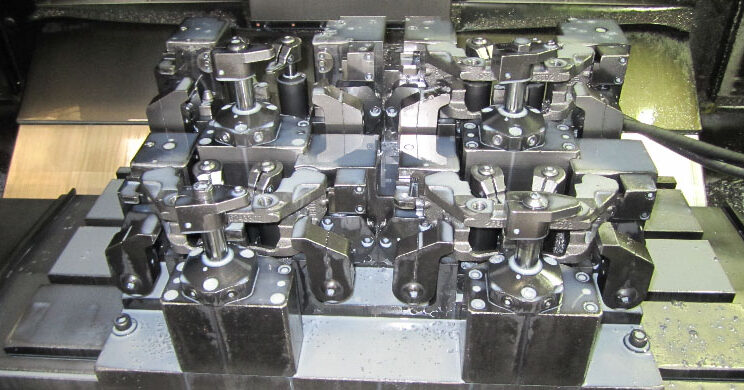
Selecting the right workholding fixture design is critical in achieving precision and efficiency in CNC machining. A well-designed fixture holds the workpiece firmly in place, minimizing errors, and allowing for accurate machining. The wrong fixture can lead to issues like vibration, misalignment, or even damage to the workpiece.
This article highlights some factors influencing the choice of workholding fixture design best suited for your CNC operations.
Analyze the Workpiece and Machining Process
Every machining process and workpiece has requirements, which means the fixture design must match these needs closely. The workpiece shape, size, and material directly influence the fixture. If you are machining a simple shape, standard fixtures like CNC vises might suffice. Complex or irregularly shaped parts may require specialized fixtures to ensure proper alignment and support. Think about the sequence of machining operations. Some processes require multiple steps to reposition or rotate the workpiece, which may involve modular or indexing fixtures.
Types of Fixtures: Pick the Right One
The right workholding fixture design can vary depending on the nature of your workpiece and the specific machining operations. Common types of CNC fixtures include:
- Vise Fixtures: These are versatile and great for smaller parts. They use jaws to securely hold the workpiece in place during machining.
- Modular Fixtures: These offer flexibility because they consist of interchangeable components asking for reconfiguration to suit different workpieces, making them ideal for small batch production or varying shapes.
- Indexing Fixtures: These allow the workpiece to be rotated at precise angles, useful for operations that require evenly spaced cuts or holes, such as slotting or drilling.
Each of these fixtures provides unique advantages for different CNC processes. Match the fixture type to your machining task.
Consider the Material and Stability
When designing or selecting a fixture, material compatibility is critical. Hard materials like steel may need strong fixtures like hydraulic clamps, while softer materials might require vacuum fixtures to avoid damage. Stability is another important consideration. The fixture must prevent any movement during machining, and it should be sturdy enough to resist vibration, which could affect the quality of the final product.
Importance of Tool Accessibility
When choosing a workholding fixture design, make sure that it allows for easy access to the tool. If the fixture obstructs the cutting tool, it will affect the quality of the machining process. The design should allow the cutting tools to move freely and access every necessary part of the workpiece. This will ensure a smoother process and reduce the chance of errors.
Balancing Cost and Efficiency
Lastly, think about cost-effectiveness. Complex custom fixtures can be expensive to design and produce, but sometimes they are necessary for high-precision jobs. On the other hand, using modular or universal fixtures can help save on costs while still providing the flexibility to handle diverse workpieces. It is a balance between efficiency and expense.
Conclusion
Choosing the right workholding fixture design requires careful consideration of factors like the workpiece material, size, and shape, as well as the machining processes involved. By selecting the most suitable fixture, you’ll enhance precision and improve overall productivity. With the right design in place, you’ll avoid unnecessary downtime and reduce the risk of costly mistakes, ensuring your CNC machining projects run smoothly.





